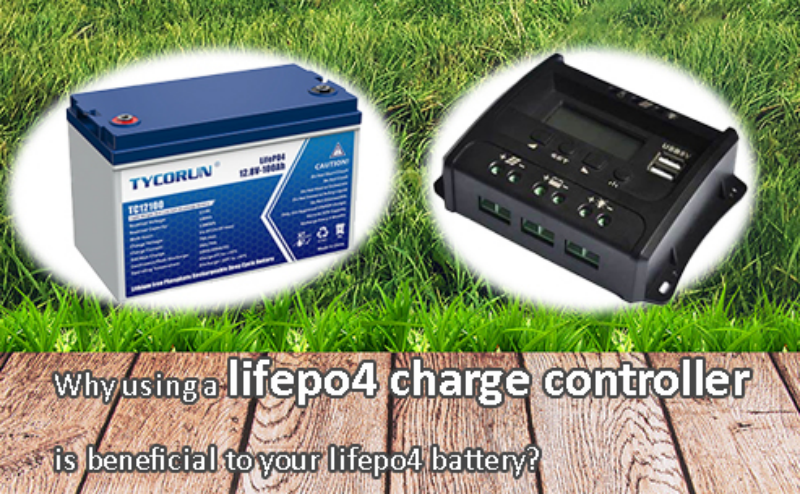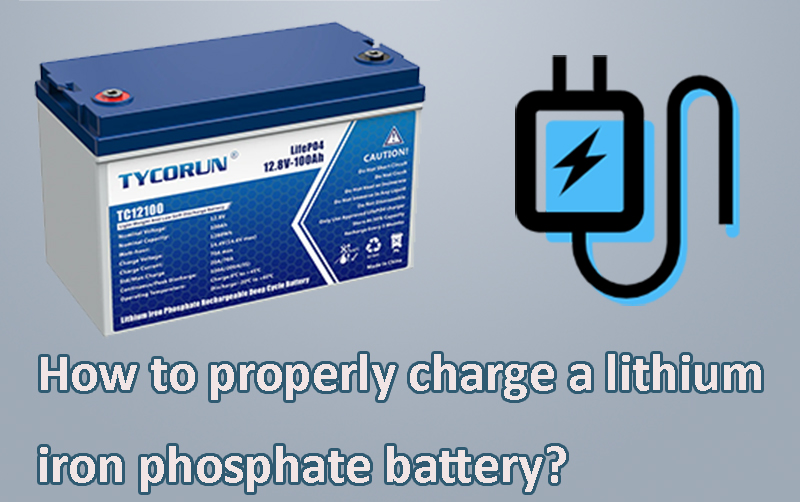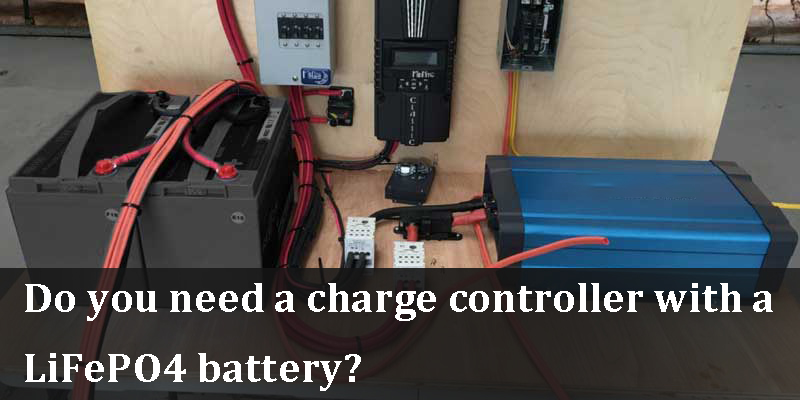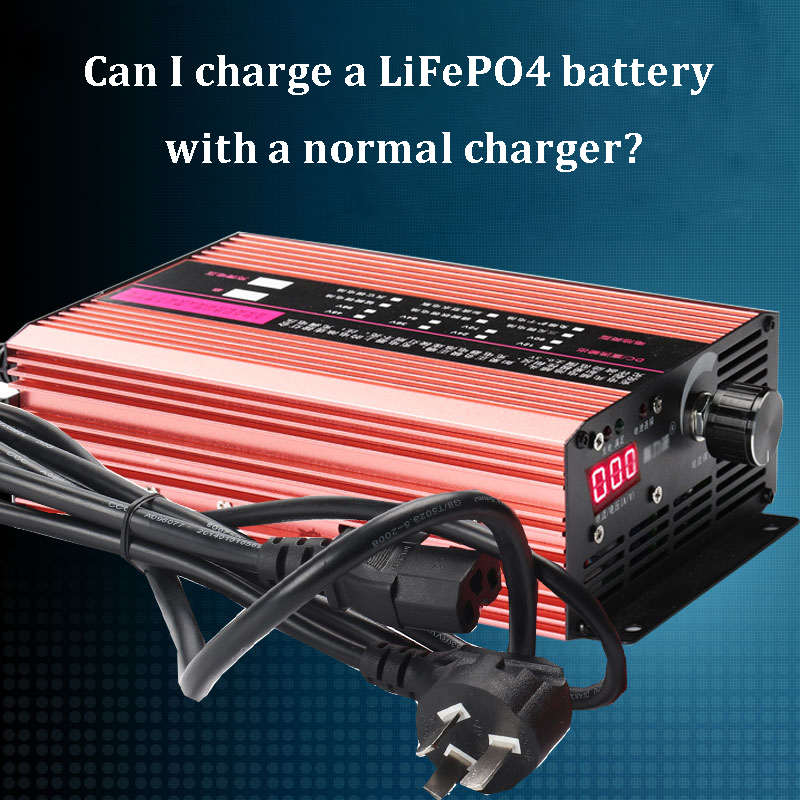
Main content:
- How to properly charge a lithium iron phosphate battery?
- Charging process and mode of lithium iron phosphate battery
- How many amps can LiFePO4 charge at?
- What is the voltage of a fully charged 12V LiFePO4 battery?
- How fast can you charge LiFePO4?
- Can you overcharge a LiFePO4 battery?
- Do you need a charge controller with a LiFePO4 battery?
- Can I charge a LiFePO4 battery without a BMS?
- Can I charge LiFePO4 with alternator?
- Can I charge a LiFePO4 battery with a normal charger?
- How do I maintain my LiFePO4 battery?
- Conculsion
Charging your lithium iron batteries using a LiFePO4 charge controller can help lengthen your battery life. You'll have to follow some guidelines first to ensure that the battery charges properly. This article provides a comprehensive and in-depth analysis of the following concepts:
- How to properly charge your lithium iron phosphate battery using a LiFePO4 charge controller?
- The charging process and mode of a LiFePO4 battery.
- How to maintain your LiFePO4 battery?
In addition, you'll also get to understand whether a LiFePO4 battery can be charged with a standard charger by reading this article to the end.
1.How to properly charge a lithium iron phosphate battery?
The best way to charge a lithium iron phosphate battery is by using a LiFePO4 charger. The charger should have a specified LiFePO4 charge controller. The smart charge controller will help you increase the battery's lifespan by charging it to appropriate capacity without damaging it.

2.Charging process and mode of lithium iron phosphate battery
The proper charging method is constant current charge (CC) -constant voltage charge (CV). The best way to charge a lithium iron phosphate battery is by using a LiFePO4 charger because only it can achieve this mode. When charging LiFePO4 in CC mode, the charger performs fast charging with the maximum output current, and the voltage of the lithium iron phosphate battery gradually increases with the charging process until it reaches the maximum output voltage of the charger (3.65*S).
At this time, it switches to CV charging mode, that is, float charging mode or slow charging, the battery voltage does not rise anymore, and the current gradually decreases with the deepening of the saturation degree of the battery cell, and the charging is completed when the charging current is less than 0.1C or 10mA. The best temperature for lithium iron phosphate battery charging is within 0-45℃, which is more conducive to the activation of chemical properties in the lithium-ion battery, making the charging efficiency higher.
3.How many amps can LiFePO4 charge at?
Lithium iron phosphate batteries have different Ah ratings. You’ll find LiFePO4 batteries with 50Ah, 100Ah, 150Ah, 200Ah, etc., in the market today. Therefore, their amp-hour rating determines the current (amps) that your battery can charge at. Consider the following example: assuming you have a 24V 200Ah LiFePO4 battery, you’ll need a 200 amp charger to charge your battery. When determining the amount of current your battery needs to charge, it is essential to know your battery chemistry. Other battery types, such as lead-acid and nickel-based, require different charging currents.
4.What is the voltage of a fully charged 12V LiFePO4 battery?

A fully-charged 12V LiFePO4 battery has an approximate voltage of 14.4V to 14.6V when measured using a multimeter (or a voltmeter).
5.How fast can you charge LiFePO4?
Lithium iron phosphate batteries can fast charge - you can charge it fully in less than an hour. That's an advantage since you'll experience shorter downtimes. However, using a good charger with the recommended LiFePO4 charge controller would be best. Doing so will help your battery have a longer lifespan.
6.Can you overcharge a LiFePO4 battery?
No - do not overcharge your lithium iron phosphate batteries. Most LiFePO4 batteries get easily damaged because of overcharging and over-discharging. Using a LiFePO4 charge controller will help you do away with overcharging your lithium iron phosphate batteries. Advanced LiFePO4 charge controller will also help you prevent over-discharging.
7.Do you need a charge controller with a LiFePO4 battery?
Charging your LiFePO4 battery using the correct charger with an integrated LiFePO4 charge controller increases your battery’s lifespan. A LiFePO4 charge controller allows you charging lifepo4 batteries fully and regulates the current flowing into the battery. Simply put, yes, it would be best if you’d use a LiFePO4 charge controller to lengthen your LiFePO4 battery’s lifespan.

8.Can I charge a LiFePO4 battery without a BMS?
It is not recommended to charge a LiFePO4 battery without BMS as the battery might be damaged by overcharging and overdischarging. Using a BMS will undoubtedly increase the battery life by regulating charging and discharging. In addition, BMS also enhances the performance of your LiFePO4 battery by monitoring its temperature and health. It is also worth noting that the BMS protection board of inferior lithium batteries uses inferior materials, and the temperature of the lithium battery cannot be well monitored during charging and discharging, which may lead to thermal runaway.
Therefore, it is especially important to choose a professional battery store. TYCORUN ENERGY is a trustworthy lithium batteries store. Our lithium iron phosphate batteries are equipped with high-quality high-performance BMS, which can automatically and intelligently manage the charging and discharging of the battery cells to ensure the consistency of the voltage and capacity of the battery cells in use, to further improve the safety performance of the battery to predict potential hazards and protect the battery and the user.
9.Can I charge LiFePO4 with alternator?
Yes, you can charge LiFePO4 with alternator. However, it depends on the type of alternator you have. LiFePO4 batteries need a stable alternator to generate enough voltage to charge them. A bad alternator is sure to produce erratic voltage, which can disconnect your lithium iron phosphate battery management system. When your battery BMS is not enabled, it can easily be damaged by overcharging.
10.Can I charge a LiFePO4 battery with a normal charger?
It is not possible to charge a LiFePO4 with an normal lithium battery charger, because the nominal voltage of the lithium iron phosphate battery is 3.2V, the charging cut-off voltage is 3.6V, and the maximum cannot exceed 3.8V. The nominal voltage of ordinary lithium batteries is 3.6V, and the charge cut-off voltage is slightly 4.2V. If you use a 4.2V normal lithium battery charger to charge the lithium iron phosphate battery, the charging voltage will be too high, which will cause damage to the LiFePO4 battery.

In addition, charging your LiFePO4 with a standard (sealed lead-acid) charger is also not allowed, because the safety requirements of lithium iron phosphate battery packs are higher, and the charging mode of LiFePO4 chargers is different from that of lead-acid batteries. Universal. A dedicated charger equipped with an intelligent LiFePO4 charge controller should be used to charge the LiFePO4 battery.
11.How do I maintain my LiFePO4 battery?
LiFePO4 batteries do not require any active maintenance. However, you’ll still need to take care of the battery to ensure that it serves you for long. Here’s how you can care for your lithium iron phosphate battery:
- Charging - it is essential to charge your LiFePO4 battery the right way. It would be best for you to use a LiFePO4 charger that has been programmed to charge your specific battery. In addition, using a LiFePO4 charge controller will help you charge the battery to full capacity.
- Storage - storing your LiFePO4 battery after charging it would be best. The battery should be stored in a cool, dry place away from other metallic objects - doing so helps you do away with parasitic loads. Remember, your LiFePO4 battery has a self-discharge rate of 2% per month.
- Check how long your battery runs before it requires recharging. If it dies faster than it used to when it was new (assuming that the load is constant), it would be best to consider acquiring a new LiFePO4 battery.A LiFePO4 battery has a charge cycle of 5,000 cycles.
- It would be best not to expose your LiFePO4 battery to excessive shock and vibrations, especially if it is not a marine battery. Also, check if there are visible leaks or swells on your battery. If the swells or leaks are present, discontinue using the battery immediately.
12.Conculsion
Charging your lithium iron phosphate battery using a LiFePO4 charge controller helps you lengthen your battery cycle life. The LiFePO4 charge controller will help you increase the battery life by charging it to full capacity without damaging it. When determining how many amperes are required to charge your LiFePO4 battery, look at the battery's Ah rating. If you have a 12v 100ah lifepo4, you’ll need a 100 amp charger to charge your battery. In addition, a LiFePO4 charge controller will help prevent over-discharging as well. It would be best always to use your LiFePO4 battery with a BMS - it also optimizes the battery.
Related article: 24v 200ah lithium battery, how to charge a lithium battery that is completely dead